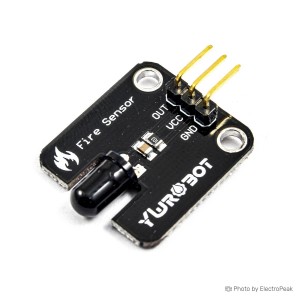Flame Sensors operate by detecting the infrared radiation emitted by flames. When exposed to flames, the sensor generates an electrical signal, triggering an alert or response in a connected system.
Flame
Flame Sensor
A flame sensor, or IR (Infrared) reader, is a device designed to detect the presence of flames or infrared radiation. Widely used in fire detection and safety systems, these sensors play a crucial role in identifying potential fire hazards in various environments.
Price of Flame Sensors:
The price of flame sensors varies based on factors such as brand, sensitivity, and additional features. Entry-level models like the IR Infrared Flame Sensor Module are cost-effective, while specialized sensors may have a higher price point.
Tips for Buying Flame Sensors:
Consider factors such as sensitivity, response time, and output type (analog or digital) when selecting a flame sensor. Choose a sensor that aligns with your project's requirements for reliable flame detection.
Popular Models of Flame Sensors:
How does a Flame Sensor work?
Where are Flame Sensors typically used?
Flame Sensors find applications in various industries, including home safety systems, industrial automation, and commercial buildings. They are often integrated into fire alarm systems, gas appliances, and other fire detection devices.
Are Flame Sensors sensitive to other light sources?
The Flame Sensor Module is designed to identify fire/flame sources or other light within the wavelength range of 760nm – 1100 nm. It utilizes the YG1006 sensor, a high-speed and highly sensitive NPN silicon phototransistor. It's important to note that sunlight can affect the sensor's performance.
How do I interface a Flame Sensor with a microcontroller or Arduino?
Interfacing a Flame Sensor with a microcontroller or Arduino involves connecting its output to the digital input pin of the controller. The sensor provides a digital signal that can be processed by the microcontroller to trigger specific actions.
